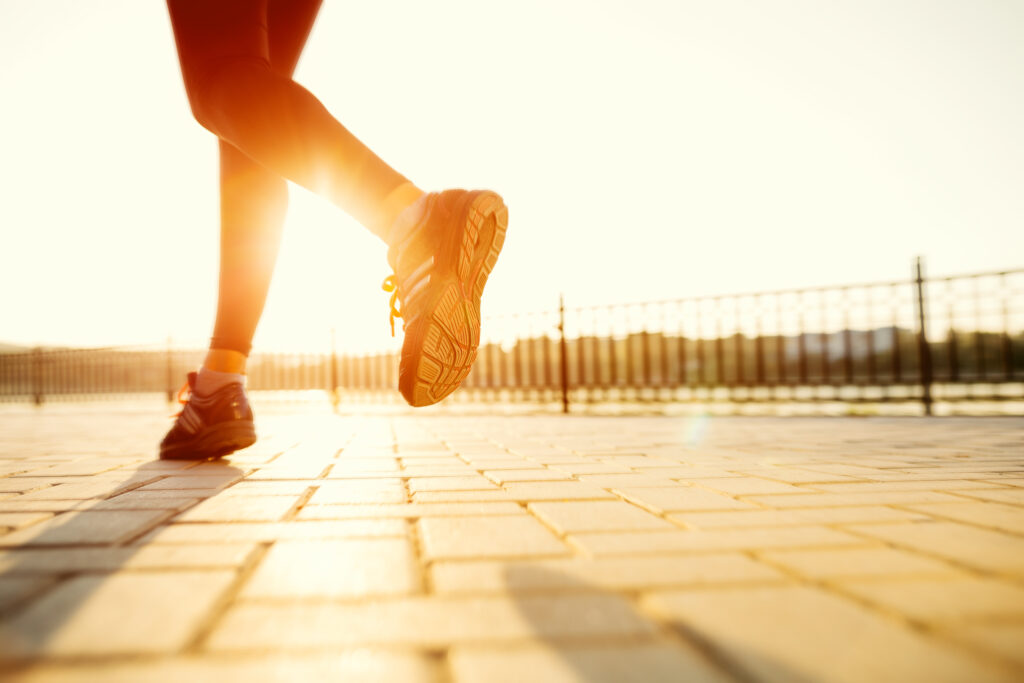Everyone today knows the benefits of exercise on our body. Regular physical activity enhances our physique, provides better cardio-pulmonary health, increases alertness and is even shown to increase longevity. Most of the successful entrepreneurs, world leaders, scientists, etc. swear by physical activity. That is because exercise provides people with a huge sense of wellbeing and positivity. People who exercise are more energetic, have a sharper memory, perform tasks faster and are usually more relaxed and confident.
Research has shown that regular exercise-no matter the age and fitness- can have a profound impact on mental health conditions such as depression, anxiety, etc. It helps to improve mood and manage stress better. In this article we shall discuss the benefits of exercise on mental health.
Table of Contents:
1. Physical benefits of exercise
2. Emotional benefits of exercise
3. Benefits of exercise in different mental health conditions
4. Different types of exercises available for beginners
5. How to get started?
Physical Benefits of Exercise
Regular moderate exercise is one of the cheapest and most effective ways of staying healthy. It is never too late to get started as physical activity works as a medicine with no side effects.
Some of the well-known and proven physical benefits of exercise include:
- It helps to control or reduce your weight.
- Exercise improves blood circulation and strengthens the heart. This reduces the risk of heart diseases such as- hypertension, coronary artery disease, heart attacks, etc.
- It helps manage blood sugar levels and prevents or delays the onset of diabetes.
- It helps to quit smoking by managing the cravings and withdrawal symptoms.
- Exercise increases bone and muscle strength. It also slows down age-related bone resorption.
- Physical activity reduces the risk of certain cancers such as breast, uterine, colon, etc.
- It improves balance. This might not seem much to a young person, but it reduces fall in older people and prevents related complications.
- Provides better sleep and sleep cycles. Better sleep makes you more productive throughout the day.
- Exercise improves your sex life. It has shown to increase sexual arousal in women and reduce ED and related conditions in men.
- Exercise increases life span.
Emotional Benefits of Exercise
Exercise is not just about aerobics and building muscle mass. Here are some of the emotional benefits of exercise:
- Regular exercise reduces stress. This occurs due to the massive release of endorphins; otherwise called the happy hormones.
- It increases happiness. The endorphins released provide euphoria-like sensation without any side effects.
- It improves self-confidence and self-worth. This sense carries over to other aspects of your life and positively impacts your career and social life.
- Exercise improves your cognitive functions and enhances memory retention.
- It helps to get rid of short-term anxiety (common in new adults).
- It increases creativity- probably due to the increased blood flow to your brain hemispheres.
- Provides a sense of relaxation. This occurs due to the rise of core body temperature during physical activity which when drops; signals the brain that it is time to fall asleep. Exercise works likewise sleeping pills for mild insomniacs.
- It helps to develop mental resilience and teaches the brain how to adapt to stress in regular life.
Benefits of Exercise in Different Mental Health Conditions
1. Depression
- Exercise can treat mild to moderate depression, prevent the development of mild symptoms and even prevent relapse.
- A recent study has shown that moderate regular exercise for even 15 minutes a day can reduce the risk of major depression by 26%.
- Physical activity promotes neural growth, reduces inflammation, releases endorphins and spreads a sense of calm and peace.
- It can serve as a welcome distraction from the series of negative thoughts.
2. Anxiety
- Exercise is a natural anti- anxiety medication. It reduces stress and negative feelings while providing a sense of wellbeing through the release of endorphins.
- By practicing mindfulness meditation with the exercise (ex: concentrate on your breathing during the exercise while forgetting the surrounding) you can increase the outcome of positive thoughts.
- By giving your mind something else to focus on, exercise attempts to break the vicious cycle of negativity and self-criticism.
3. ADHD
- ADHD stands for attention deficit hyperactivity disorder. The affected people in simple terms have trouble focusing and controlling impulses.
- As exercise improves concentration, mood, memory and control; it is one of the most effective ways to reduce symptoms.
- Studies have shown a phenomenal response in patients after regular physical activity. Even the immediate effect is noteworthy.
- Exercise works in the same way as most drugs prescribed to such patients- by increasing the neurotransmitters such as dopamine, noradrenaline, etc. who are all involved in attention and focus.
4. PTSD
- PTSD stands for post-traumatic stress disorder. It is the anxiety and panic disorder people face after a great trauma.
- Researchers claim that by focusing on your body as you exercise and acknowledging how it feels; you can help your nervous system get unstuck.
- Exercises that engage cross-body movement and need both physical and mental concentration- walking, running, hiking, river rafting, dancing, rock climbing, etc. are the most effective methods.
5. Stress
- Stress has become such a regular part of our daily life that people nowadays are having trouble identifying when things get out of hand.
- Stress seems like a small problem initially, but it is the first step to major mental health disorders such as depression, mania, etc.
- It also leads to major physical disorders that are usually life-threatening. Stress is the beginning of a vicious cycle of body and mind.
- The endorphins released after exercise are very effective in alleviating stress-like symptoms. It helps to relax the muscles and blood vessels that seem to tighten unbearably during a panic attack.
Different Types of Exercises Available For Beginners
Contrary to popular belief, you don’t need to spend a fortune on gym memberships or sweat buckets to enjoy the benefits of physical activity. 30 minutes daily for 4 to 5 days a week is enough to notice visible results. The key to obtaining results is commitment.
Some common exercises prescribed to people suffering from mental disorders are:
- Yoga- This form of exercise has been known for generations to eliminate stress hormones and manage our response to taxing conditions.
- Cycling- Such exercises that challenge the motor skills are effective in patients of schizophrenia for improving white matter integrity and reducing symptoms.
- Running- It involves the mind and body both and helps you to manage your thoughts better. It prevents zoning off and hence keeps negative thoughts at bay. It has been shown to be beneficial in depression, anxiety and even ADHD patients.
- Aerobics- High intensity aerobics helps to increase blood and oxygen to the brain. It boosts the body with endorphins and maintains a general sense of wellbeing.
- Walking- Even brisk walking can produce positive outcomes. It had been effective in patients with PTSD and mania to overcome fear and apprehension.
How to Get Started?
It seems pretty difficult to motivate ourselves to go out and exercise when even talking to loved ones seems a harassing job. You know exercise will help you, but taking the first step seems such a task! It is important not to get disheartened and give up. All good things take time.
Some of the ways you can start including physical activity in your schedule are:
- Start small and keep increasing targets. Jump-starting with a huge goal will only lead to more despondence.
- Schedule workout sessions when your energy is highest, as that is when you will be the most motivated.
- Keep yourself and your surroundings comfortable. Wear comfortable clothes, workout in a quiet, cool place. This will keep you energised.
- Start with the activities you enjoy. Play with your children, take your dog out for a walk, go shopping, try gardening, etc.
- Ask a person you are comfortable with to join in. This can make the process a social event instead of a monotonous drag.
- Start from within your comfort zone and then make way outwards.
Physical activity is like the best drug of nature. The more you put in, the more you reap. It hardly has any side effects unless done in excess. It doesn’t need to take up a large part of your schedule. There is no loss! However, we recommend that you always consult your health practitioner before taking up any activity.







